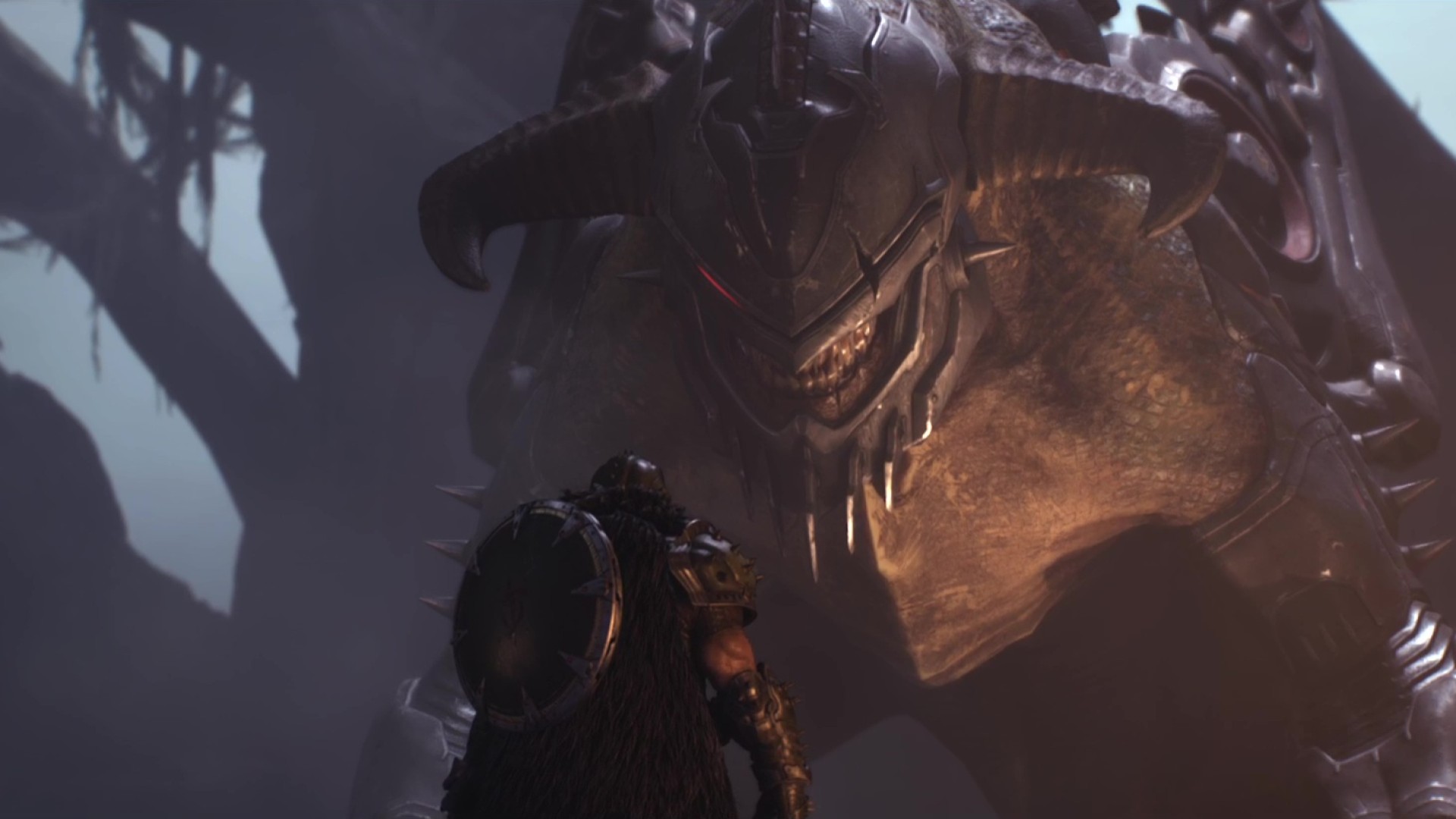
(Image credit: Bethesda Softworks)
Doom: The Dark Ages had a formidable task from the start. Following the explosive impact of Doom 2016 and Doom Eternal, it faced the challenge of delivering fresh content. With its release as a prequel, it attempts to break new ground, although at times it may feel like an homage to previous entries, while other moments introduce cumbersome innovations. The Slayer, reminiscent of a fatigued warrior, embodies this duality as the game unfolds.
The story dates back to a prequel era, before Doom 2016, set during the Slayer’s time on Argent D’Nur. This fantasy world, riddled with demons and mystical forces, becomes a backdrop where mind-control devices attempt to tether our hero. Despite these constraints, hints of rebellion are evident throughout the gameplay.
The introduction of Lovecraftian witches and ancient gods adds new dimensions, yet their essence feels underutilized, often serving as mere aesthetic redesigns of existing foes. The crux of the narrative, revolving around figures like King Novik and Thira, is somewhat thin, requiring players to invest heavily in the lore of Argent D’Nur despite its disjointed storytelling.
Absent the humor and rebellious spirit that endeared the Slayer to fans, he now seems muted, often following directions with little of the past’s ferocity or unpredictability. Familiar elements like glory kills are notably missing, contributing to this diluted persona. The Slayer, instead of punctuating the narrative with impromptu destruction and humor, follows a more subdued path this time.
Turning to visuals, the game is a feast for the eyes, especially when viewing its macabre landscapes. One particularly memorable stage involves traversing the remains of a colossal beast. While levels set in Hell and the domain of the ancient gods captivate the eyes, their designs can sometimes feel unwieldy, but the spectacle remains intact.
Even more noticeable is the absence of Mick Gordon’s signature soundtrack. The game’s music, though serviceable, lacks the earlier visceral energy and presence that made previous tracks iconic and unforgettable. The omission of Viking Metal themes further detracts from potential auditory riches.
Emphasizing melee combat, The Dark Ages introduces shield and parry mechanics over earlier acrobatics like the double jump. While these mechanics offer novelty, engaging in long bouts against tougher opponents can feel repetitive. Despite these shifts, the core gunplay maintains its satisfying rhythm, notably with standout weapons that showcase creative lethality.
Other novelties include piloting sequences involving cyber dragons and enormous mechs. While visually impressive, these ventures often feel clunky and detract from the core experience. The mechs, in particular, struggle to match the dynamism of ground combat. Such diversions, although short-lived, fail to elevate the gameplay significantly.
Ultimately, Doom: The Dark Ages offers a mixed experience. While it carries forward engaging features from its predecessors, new elements tend to falter. The game is enjoyable on its terms, as it rekindles the familiar energy of battle and strategies against demonic forces. Yet, when confronted with its innovations, Doom: The Dark Ages admittedly struggles to recapture the series’ former glory. Those seeking classic Doom energy may find satisfaction, but should temper their expectations for groundbreaking novelty.
Interested in what’s on the horizon? Explore our list of new games for 2025!